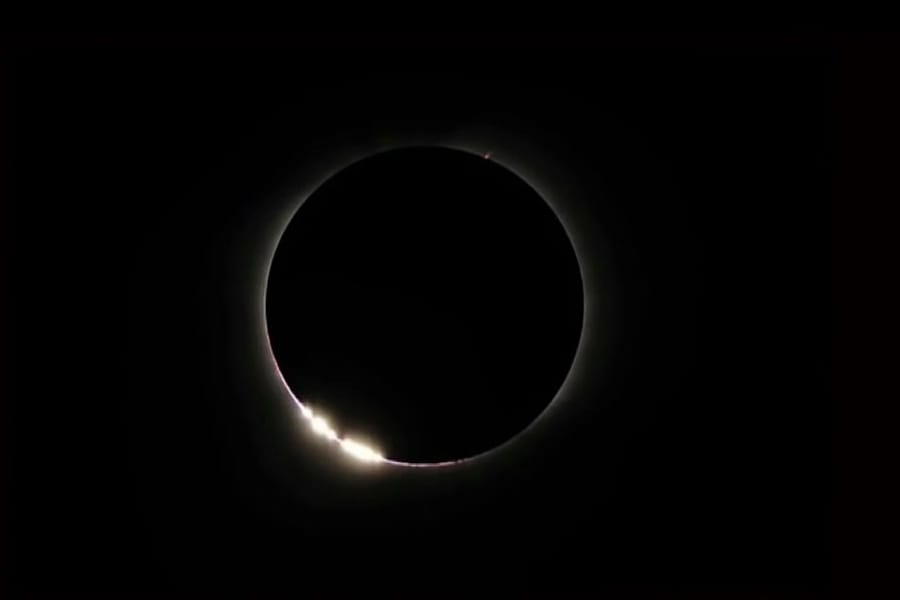
While many flock to the locations where the total eclipse will be visible on Monday, there’s one location in San Francisco where the eclipse will come to them, and even help provide a musical accompaniment. The Exploratorium is going to be presenting the world premiere of a work called 233rd day, before and after Totality. It’s a duet between Kronos Quartet and a computer running software by the composer, Wayne Grim that uses data to create a ‘sonification’ of the eclipse.
There’s lots more information at the Exploratorium website, and on Monday, we’ll be streaming their feed on our website.
As a sound artist and multimedia developer for the Exploratorium, Wayne Grim has done this ‘sonification’ before for eclipses, but this time they’re going all out. “We receive a telescope feed via satellite from Wyoming, here at the Exploratorium. It comes into this room, into this theater, into my computer, and I have some software that I’ve created that interprets that data in many different ways. There are multiple instruments inside of this software, and so some instruments will read the data as pitch information, some instruments will read the data as rhythmic values or intensity or volume. And they’re all converted into things that can be useful to create kind of a musical landscape that happens.” Because the telescope data is from Wyoming, the totality, when the moon briefly but entirely blocks the sun, will actually be an hour after we get the non-full eclipse here in the Bay Area. In addition to the data feed that will be determining the computer’s sounds, there are any number of other elements of chance in the piece. “If we have cloud cover, the software does something different,” Grim says. “Also the telescope engineer will switch between four different shots. That changes the color, it changes the brightness, and I don’t know when he’s going to do that either, so those are unknown.” And the score that Kronos will be playing from is open to their interpretation. “I would say 50-60 percent is written out, but the other portion is written in such a way that they have to make decisions about how to play, what to play, when to play, and they’ll also be looking at the telescope feed in a little monitor, and each player has a little monitor. So hopefully what they’re hearing from the computer, and also seeing on the telescope will somehow inform their decisions about what they’re doing.”







